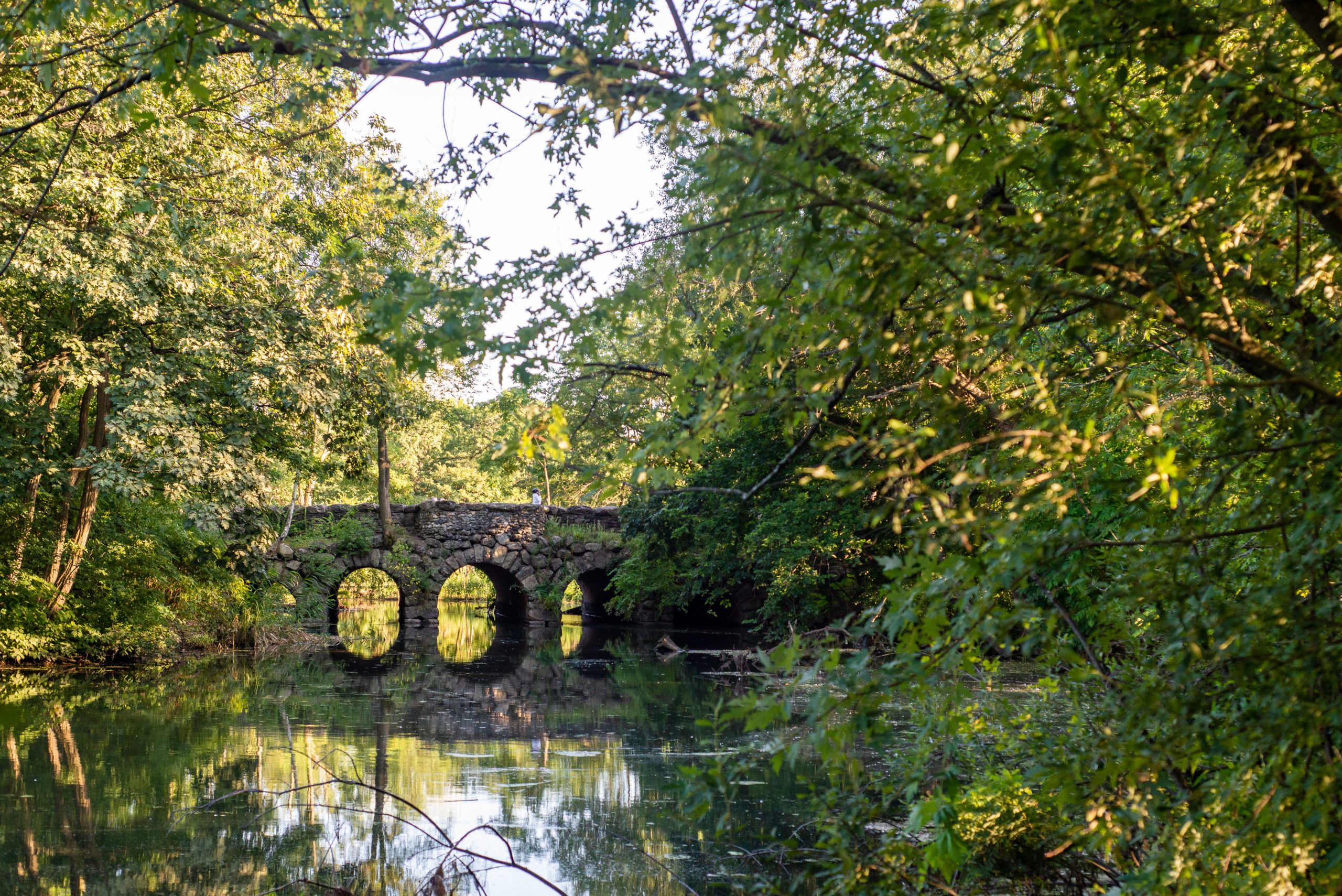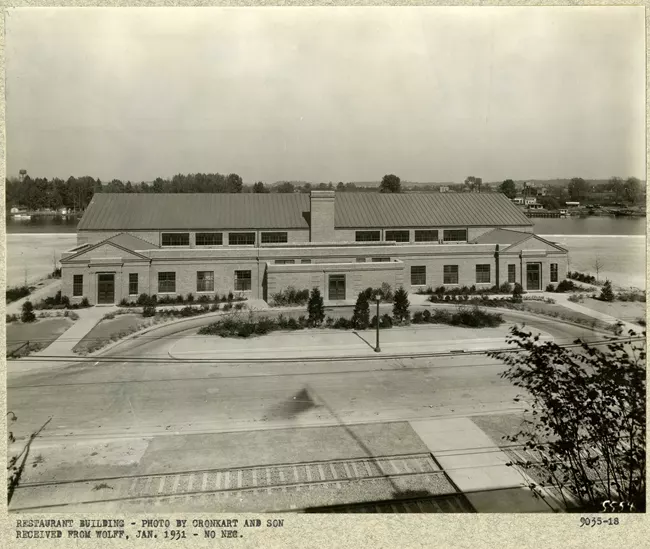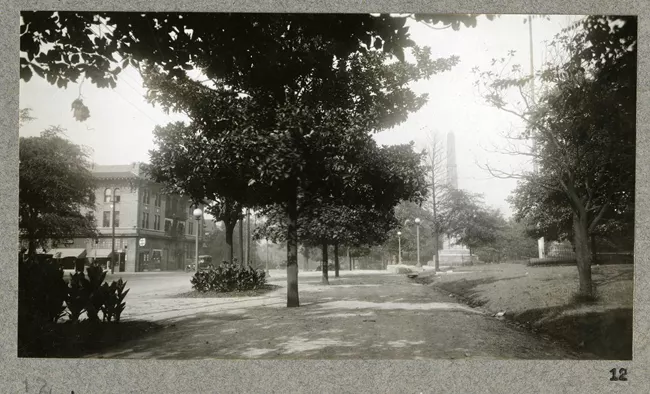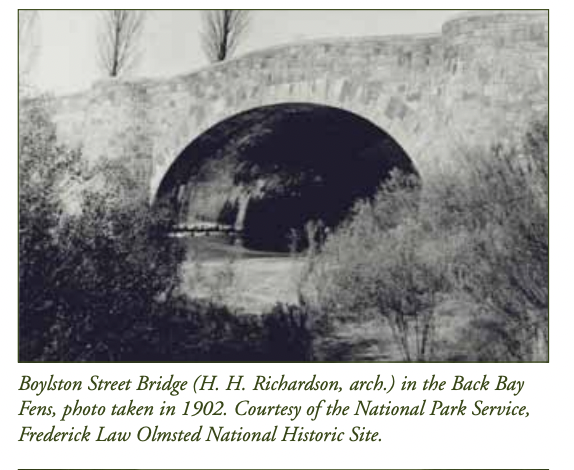
In the wake of the industrial revolution and a population boom, the city of Boston was faced with a problem. The area now known as the Back Bay was once a tidal salt marsh, and, as developers filled it in, issues emerged as raw sewage, industrial waste and other health hazards began to inundate the new neighborhood and its central waterway, the Muddy River. In the 1870s, Frederick Law Olmsted was hired to work with city engineers on a solution for managing this effluent.
The resulting project—an innovative, interconnected system of waterways and parkland—not only improved the sanitation of a rapidly-expanding Boston, but also formed a linked series of parks, allowing residents to enjoy a once-polluted and unwelcoming part of their city.
We know this park system today as the Emerald Necklace, from Franklin Park in Dorchester to Charlesgate Park in the Back Bay, where the Muddy River feeds into the Charles. As it turns out, “Emerald Necklace” was not the first name given to this remarkable “green ribbon” of parks and parkways designed by Olmsted and his associates. Today the Necklace is known nationwide as one of Olmsted’s finest works.
Stretching seven miles from end to end, the Emerald Necklace encompasses more than 1,100 acres of land, and stands as one of the nation’s earliest examples of green infrastructure—using organic materials such as stone, earth and plants to help absorb water and filter pollutants, instead of manmade structures of concrete or metal. With the care and support of parks and recreation agencies in Boston, Brookline and the Commonwealth of Massachusetts, alongside stewardship groups like the Emerald Necklace Conservancy, the Necklace continues to serve its purpose of flood protection and water management for more than a dozen neighborhoods in Boston and surrounding areas.
Today, the Emerald Necklace offers a variety of activities for Bostonians and tourists alike, whether it’s sailing on Jamaica Pond, hiking the forests of Olmsted Park, exploring the gardens of the Back Bay Fens, visiting the Franklin Park Zoo or just stealing a quiet moment away from the bustle of the city. In the pandemic, it has renewed its role as connector, providing a green commute corridor to cyclists and pedestrians. And if you can’t make it all the way to Boston—good news! The Emerald Necklace Mobile Tour Guide allows you to explore the Necklace anytime, from anywhere, with free virtual tours at your fingertips. Whatever the activity, the Emerald Necklace is a place where people can come together, as Olmsted hoped, “and be seen coming together.”
To learn more about the Emerald Necklace Conservancy’s work restoring and improving the Emerald Necklace parks for all, visit their website at www.emeraldnecklace.org.











